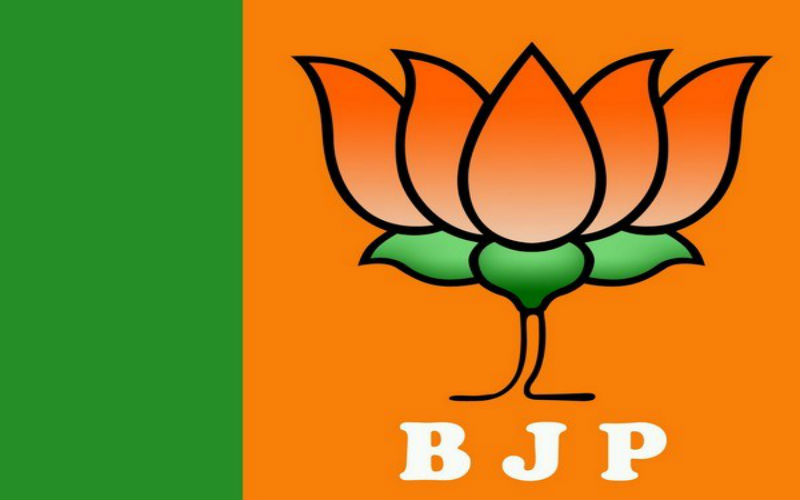By Milinda Ghosh Roy (20:16)
Kolkata, March 6 (IANS) The Bharatiya Janata Party has seemingly emerged as the principal opposition to the Mamata Banerjee-led Trinamool Congress in West Bengal by combating the incumbent with grit and determination and a high-pitched campaign, but factionalism, dearth of local leaders and absence of a face to match the charisma of the Chief Minister could dampen its challenge in the upcoming Lok Sabha polls.
The Bharatiya Janata Party has mostly been a fringe player in the state ever since its birth in 1980.
Even a decade ago, it had limited penetration among the voters, except in a few pockets in the state, which accounts for an over 27 per cent Muslim population.
Till date, the BJP has bagged Lok Sabha seats in the state only thrice – one in 1998, two in 1999 (both in alliance with the Trinamool) and two in 2014 (by fighting alone). West Bengal has 42 Lok Sabha seats.
However, after its improved showing in the 2014 general elections, last year’s panchayat polls, high-voltage campaigns, strong opposition to the state government policies and success in mobilising Hindu votes in some pockets of Bengal, BJP leaders claim there is a strong wind in its sail. So much so that the target of winning 23-plus seats set by party chief Amit Shah “looks difficult, but not impossible”.
According to political analyst Biswanath Chakraborty, the party can garner close to 30 per cent of the votes at the hustings.
“This is because a large number of people have drifted towards BJP in recent years,” Chakraborty, a professor at Rabindra Bharati University, told IANS.
The first noteworthy evidence of the BJP’s rise in Bengal was witnessed in the 2014 Lok Sabha elections, where it drew 16.80 per cent votes, significantly higher than its tally of 10.66 per cent in 2009. It also finished second in some of the seats, pushing the erstwhile ruling Left Front to the third slot.
After becoming the ruling party at the centre, the BJP made further inroads in Bengal.
With the Congress and the Left Front tying up in the 2016 assembly elections, the BJP could manage only 10 per cent of the votes. Even so, this gave it three seats and almost doubled its vote share compared to the previous assembly polls (5.6 percent) in 2011, when the Trinamool had ended the Communist led Left Front’s 34-year uninterrupted reign.
The BJP came up with its most promising electoral show in the 2018 rural body polls, where it managed to grab around 18 percent of the total votes and increased its tally in all three layers of the Panchayat system, leaving the Left and the Congress far behind.
Now, with the General Elections at a touching distance, the BJP has launched a blitz by roping in its national leaders, including Prime Minister Narendra Modi and party President Amit Shah, as part of its focus on the east – with Bengal ranking very high in its plans.
Both Modi and Shah, along with other heavyweights like Uttar Pradesh Chief Minister Yogi Adityanath, have been tearing into the Mamata Banerjee government, accusing it of unprecedented corruption, violence and minority appeasement. With Bengal sharing a 2,217-km-long border with Bangladesh, the BJP is also not wasting any chance to raise the infiltration issue and has promised to come up with a National Register of Citizens in the state, just like in Assam.
According to political observers, the BJP’s rise has been facilitated by the shrinking support base of the Left Front and the Congress, particularly of the former. A portion of the LF’s votes over the past couple of years have switched to the BJP, with the party hoping the trend would pick up momentum in 2019.
“Modi-ji is the most popular leader in the world’s largest political party. The nation has made massive progress under his leadership but unfortunately Bengal is lagging behind in so many aspects due to irresponsibility and corruption of the state government,” BJP secretary Rahul Sinha told IANS.
In spite of these positives, in its Bengal mission, the party is still on the lookout for a local leader of stature who can measure up to Banerjee’s charisma and popularity.
Chakraborty says the party also significantly lacks muscle power and suffers from a dearth of leaders to counter the Trinamool.
“The number of leaders who can take responsibilities at the state level is severely lacking,” he says.
Moreover, factionalism also could queer its pitch. State president Dilip Ghosh – a former RSS pracharak – and campaign committee chief Mukul Roy – a new entrant from the Trinamool – reportedly don’t see eye to eye.
And despite the tall claims of the leaders, political circles are also keeping their fingers crossed about the BJP’s organisational might across the state, where they would be up against the well-oiled Trinamool poll machinery.
The split in the Gorkha Janmukti Morcha, which has a significant base in North Bengal’s Darjeeling hills, has increased the worries for the BJP. In 2009 and 2014, the saffron outfit had won the Darjeeling seat with the backing of the GJM. But now, with a powerful faction of the GJM switching over to the Trinamool, retaining Darjeeling could be an uphill task for the BJP.
Last but not the least, the BJP’s campaign plank of corruption against the Trinamool could seem a trifle hollow with the entry of leaders like Mukul Roy and Shankudeb Panda, who both figure in the Narada sting video footage and have also been quizzed by the CBI in the ponzi scam probe.
The latest inclusion in the party – former West Midnapore police chief Bharati Ghosh, is linked to an extortion case in the district’s Daspur area.
[source_without_link]IANS[/source_without_link]

